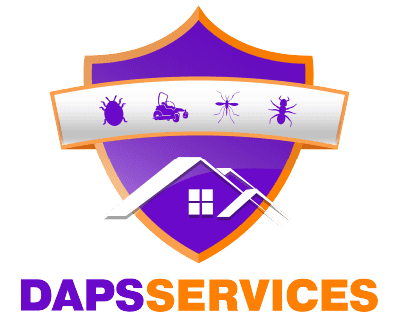When it comes to protecting your home, pest prevention is a crucial step that is often underestimated. While DIY solutions may help reduce visible pests, true long-term protection comes from effectively sealing your home and pairing those efforts with professional pest control.
From ants and bed bugs to mosquitoes and termites, pests can enter homes through surprisingly small openings. As experts in pest management, we’re here to guide you through the most effective ways to seal your home against unwanted intruders, and explain why professional help makes all the difference.

Why Sealing Your Home Matters
Sealing your home is the first line of defense in pest prevention. Small cracks, gaps, and crevices in the exterior of a house provide easy access for pests. Even insects as small as bed bugs can hitchhike inside on luggage or furniture, and mosquitoes only need the slightest gap around a window screen to invade.
Effective sealing helps:
- Block pest entry points
- Reduce the need for reactive treatments
- Improve energy efficiency by reducing drafts
- Create a healthier, more comfortable living environment
However, sealing is not just a one-time job, it’s an ongoing process best paired with professional inspections to identify hidden vulnerabilities. For a deeper look at why these gaps pose a persistent threat, learn more about the importance of sealing cracks as part of a long-term pest strategy.
Focus Areas for Common Pest Entry Points
To achieve strong pest prevention, it’s essential to address the most common entry points pests exploit:
- Doors and windows: Check weather stripping, door sweeps, and window seals for wear or gaps.
- Vents and chimneys: Install mesh screens over vents and chimney openings to block rodents, birds, and insects.
- Foundation and siding: Inspect for cracks along the foundation, siding, or where utility lines enter the home.
- Roof and attic: Look for loose shingles, damaged soffits, and gaps around roof vents where pests like rodents and spiders can enter.
- Basements and crawlspaces: Pay attention to moisture and entry points at ground level, as these are hotspots for termites, ants, and cockroaches.
While homeowners can manage some of these tasks, professional pest control teams have the tools and expertise to thoroughly assess and address high-risk zones.
Sealing Against Specific Pests
Different pests require slightly different approaches when it comes to sealing and exclusion.
- Ants: Focus on sealing cracks in walls, around windows, and in the foundation. Keep tree branches trimmed back from the house to prevent ant highways.
- Bed bugs: While they don’t enter through cracks, bed bugs can sneak in on used furniture, luggage, and clothing. Use protective mattress encasements and be cautious when bringing secondhand items home.
- Spiders: Reduce their access by sealing gaps around doors, windows, and rooflines. Remove clutter indoors and outdoors where spiders like to hide.
- Rodents: Mice can squeeze through holes the size of a dime. Seal holes with steel wool and caulk, and use metal flashing to reinforce vulnerable areas.
- Mosquitoes: Install and repair window and door screens, and eliminate standing water around the property.
- Termites: Seal foundation cracks and avoid wood-to-soil contact around the home’s perimeter. Professional inspections are critical since termite activity is often hidden.
- Cockroaches: Seal gaps under sinks, behind appliances, and around utility lines. Keep food stored in airtight containers to reduce attraction.
The Role of Maintenance in Pest Prevention
Sealing is only as effective as the ongoing maintenance that supports it. Over time, homes shift and settle, creating new cracks or openings. Weather conditions can degrade seals and screens, and seasonal changes may introduce new pest pressures.
For long-term success:
- Inspect seals, screens, and caulking at least twice a year.
- Keep gutters clean to prevent water damage that can create entry points.
- Store firewood away from the house and keep landscaping well-maintained.
- Address moisture issues quickly, as damp environments attract termites, ants, and cockroaches.
A professional pest control provider can incorporate regular inspections and updates into your home maintenance plan, ensuring no new vulnerabilities go unnoticed.
Why Professional Pest Control Makes a Difference
While DIY efforts are valuable, professional pest control takes pest prevention to another level. Experts bring:
- Comprehensive inspections using specialized tools
- Access to professional-grade sealants and exclusion materials
- Knowledge of pest behaviors and hidden entry points
- Ongoing monitoring to catch new issues early
And if you’re unsure what services make sense for your home, it helps to understand how to choose a plan that aligns with your pest risks, property layout, and seasonal patterns.
For example, a professional knows how to spot termite mud tubes, detect rodent droppings in hard-to-see areas, and apply materials that pests can’t easily chew through. By combining expert sealing with targeted pest control strategies, you create a home that is not only sealed but monitored and protected year-round.
Protect Your Home with Confidence
Sealing your home against pests is an investment in your comfort, health, and property value. While many steps can be handled by homeowners, partnering with a professional pest control team ensures that no detail is overlooked and that your home stays secure.If you’re ready to take pest prevention seriously, contact DAPS Services today. Our team is here to help you create a home that’s sealed, protected, and pest-free.

